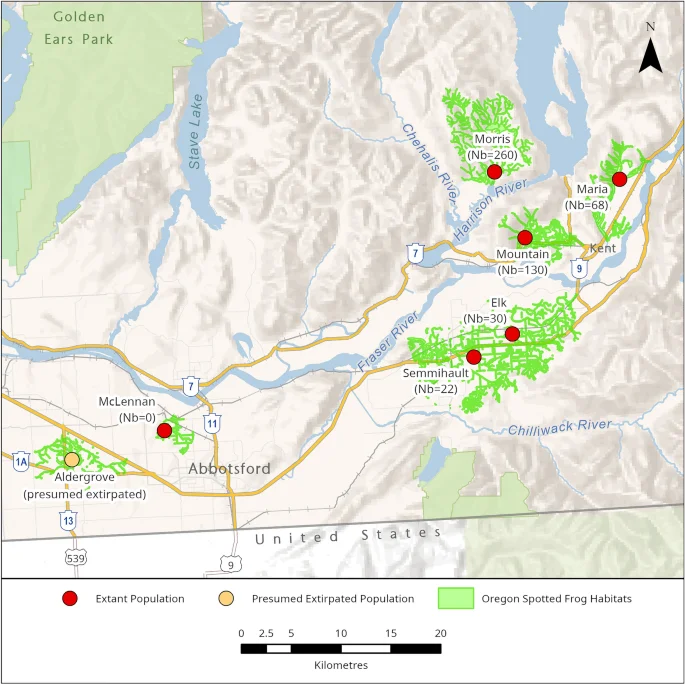
The Critical Role of Cooperation in Saving the Endangered Oregon Spotted Frog
The Oregon Spotted Frog (Rana pretiosa) is facing a genetic crisis that threatens its very survival. With only a few hundred breeding pairs left in Canada, this species represents the broader amphibian extinction crisis exacerbated by habitat loss and climate change. Recent research has highlighted the vital need for collaboration between ex situ (zoos and aquaria) and in situ (wild) conservation programs, emphasizing that genetic sustainability can only be achieved through integrated efforts.
Researchers conducted a thorough investigation using genetic samples from both wild and zoo populations. They observed alarmingly low genetic diversity in ex situ populations, which is crucial for long-term survival. The study indicated that maintaining a minimum level of genetic variation is not just beneficial but necessary for resilience against diseases and changes in their habitat. Interestingly, zoo populations that permitted free mate choice exhibited higher genetic variation compared to those where mating was predetermined. This suggests that natural breeding practices may yield better genetic health for captive populations.

Moreover, populations in zoos showed signs of inbreeding, which could further amplify genetic issues unless urgent measures are taken. The findings underline an essential reality: while zoos play a critical role in conservation, their efforts cannot substitute for preserving the natural habitats where these frogs thrive.

The genetic analysis conducted revealed that wild populations displayed significantly higher expected heterozygosity compared to their zoo counterparts. This disparity magnifies the risk of inbreeding depression as genetic diversity dwindles. Of particular concern is the Maria Slough population, projected to lose genetic diversity within just 50 generations, thereby underscoring the fragile state of this species.

Comprehensive population genetics analyses using tools like Principal Component Analysis (PCA) and ADMIXTURE highlight distinct genetic structures among populations. These approaches unveil how conservationists can better manage genetic diversity and plan for future conservation actions. It is essential to enhance genetic mixing among zoo populations and continuously monitor their effects on the genetic health of both captive and wild individuals.

In conclusion, the survival of the Oregon Spotted Frog ultimately depends on the concerted efforts of both in situ and ex situ conservation programs. With cooperative management, scientists can bolster the genetic resilience of this endangered species and outmaneuver the threats it faces. As we navigate the future of amphibian conservation, we must ask: How can individuals and organizations work together to ensure genetic sustainability and foster successful reintroduction programs?
We invite readers to share their thoughts and suggestions in the comments below. Together, we can strategize ways to protect our planet's precious biodiversity!